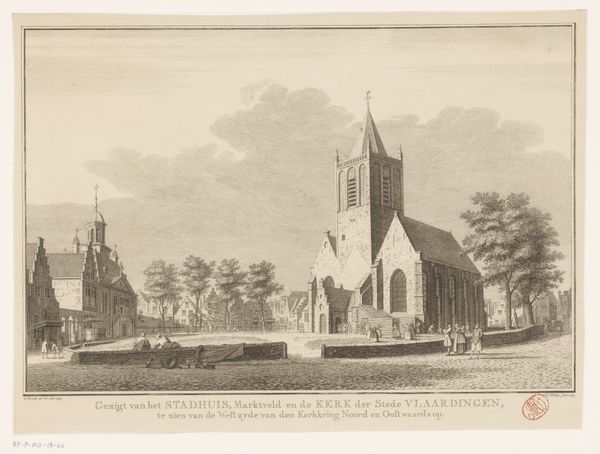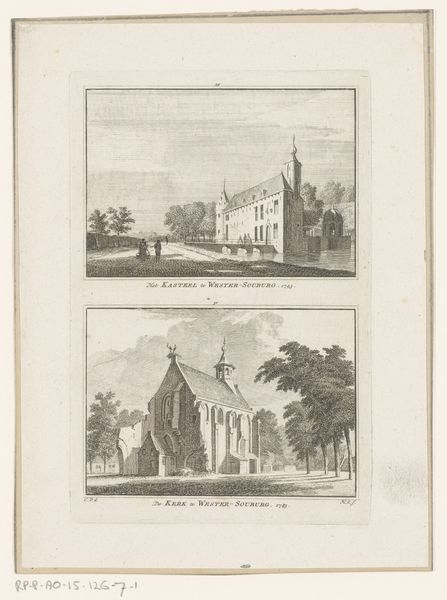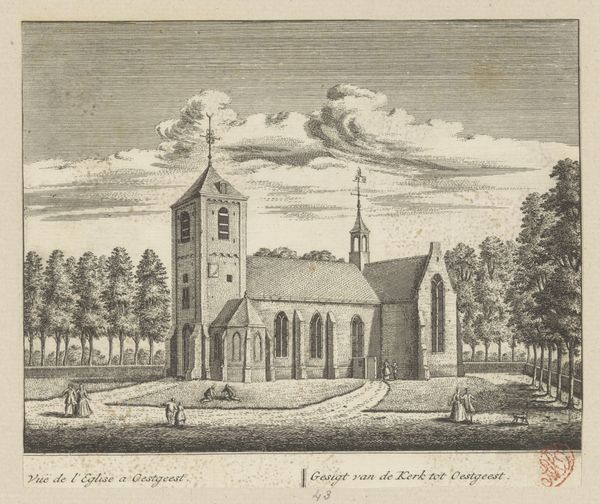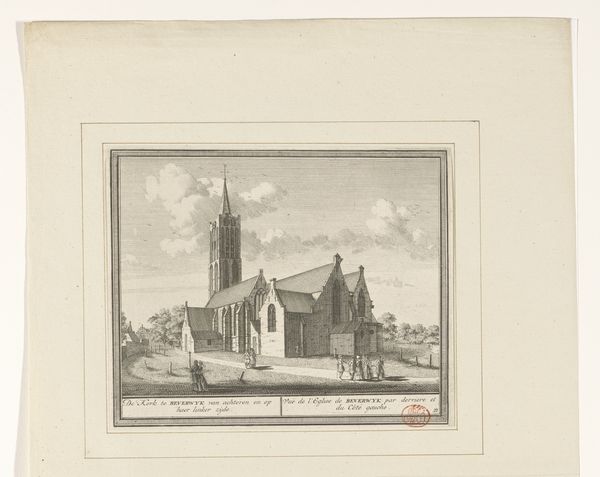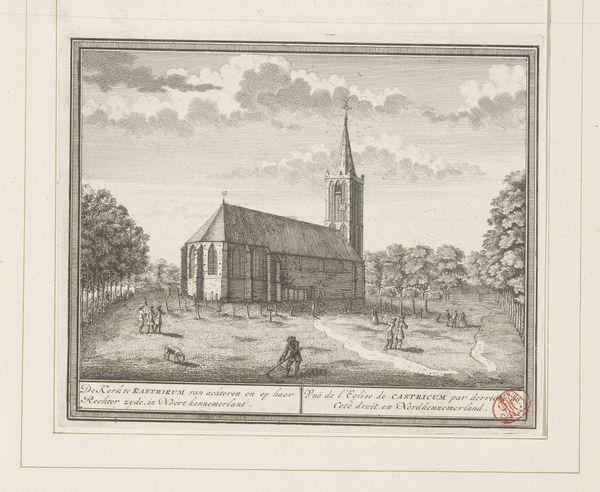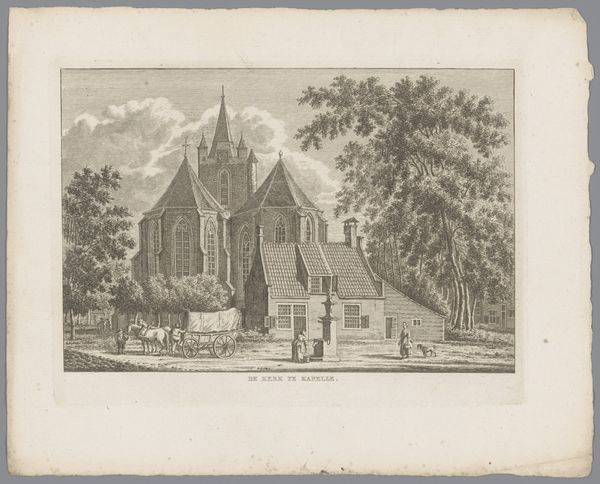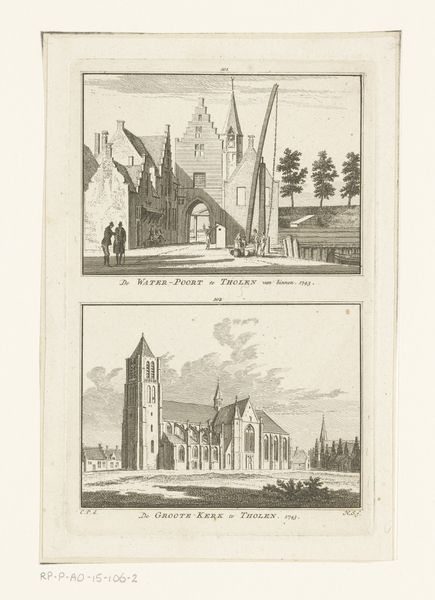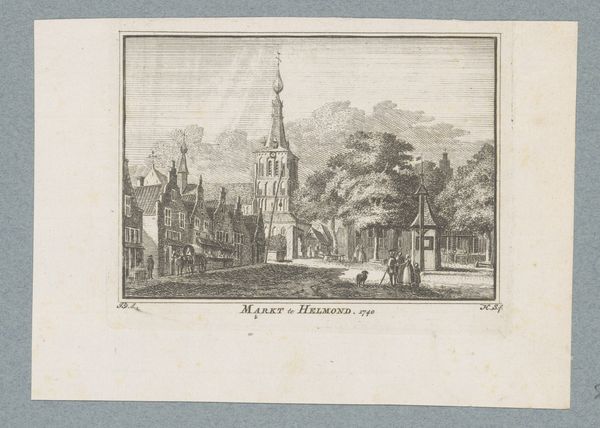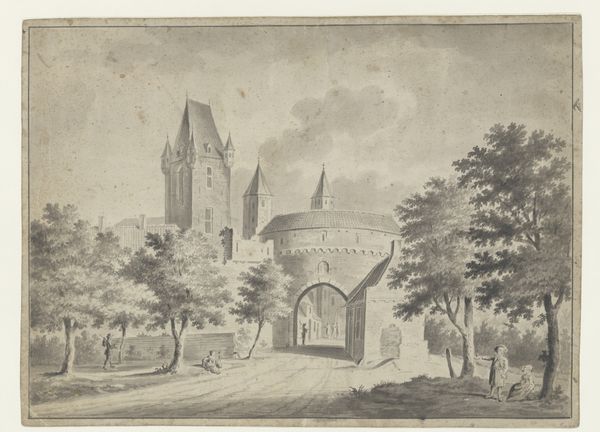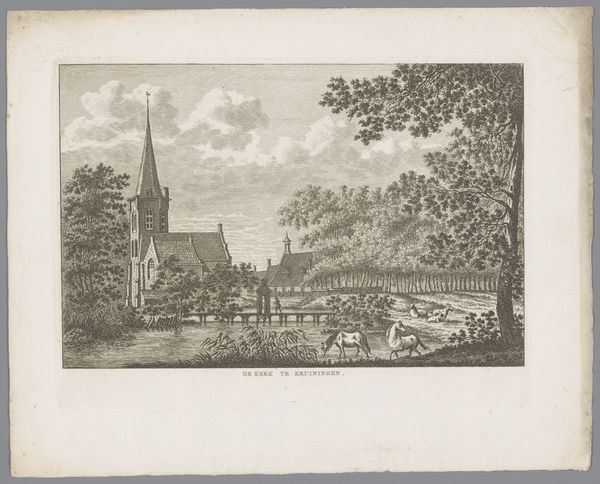
print, engraving
#
neoclacissism
# print
#
landscape
#
engraving
#
realism
Dimensions: height 162 mm, width 213 mm
Copyright: Rijks Museum: Open Domain
Editor: So, here we have Hendrik Spilman's "View of Rindern and the Sint Willibrord Church," made sometime between 1803 and 1824. It’s an engraving. It feels very still, almost serene, despite the presence of people and sheep. What formal qualities strike you when you look at this work? Curator: Immediately, the interplay of line and light establishes a structured space. Observe how the precise, almost mechanical lines of the engraving define form, from the delicate hatching of the sky to the architectural clarity of the church. It yields a captivating study in tonal variation within a monochromatic palette. Do you notice how the steeple is deliberately centered? Editor: Yes, the church’s verticality anchors the whole composition, giving it a very balanced feel, like a classical landscape. But how do you interpret the figures, especially compared to the meticulous rendering of the architecture? Curator: Note that the figures seem somewhat diminished, almost like incidental details in the grand scheme. This proportional relationship directs us to focus not on individual narrative but on the formal harmony achieved within the landscape itself. The texture created through the medium guides the eye; do you agree that the landscape supersedes any contextual element? Editor: I do see that now. At first I read it as a picture of a place and people, but seeing how carefully the line work builds space… it does pull the attention away from the everyday and more toward pure form. Curator: Indeed. By privileging the visual structure over a purely representational function, Spilman’s print exists primarily as an exercise in controlled aesthetic organization. A landscape constructed from, and for, the line itself. Editor: That gives me a completely different appreciation for it. Thanks for pointing that out.
Comments
No comments
Be the first to comment and join the conversation on the ultimate creative platform.



